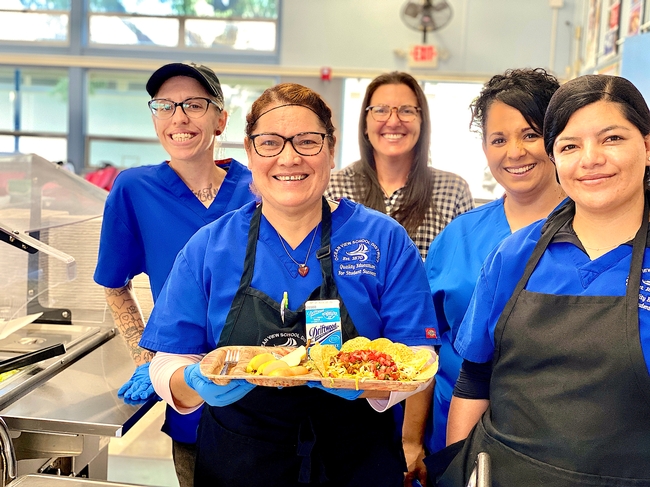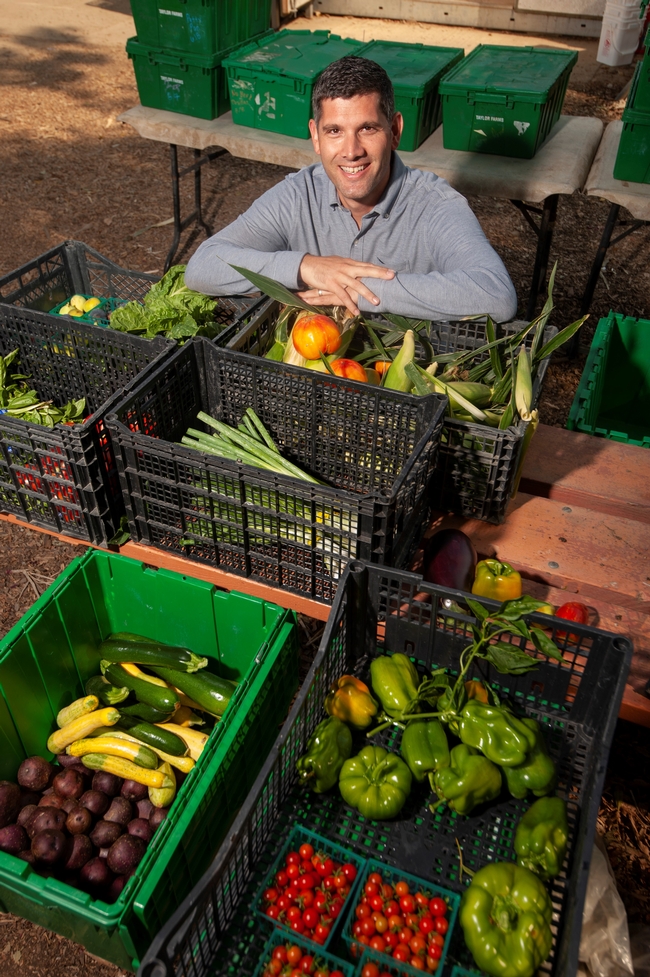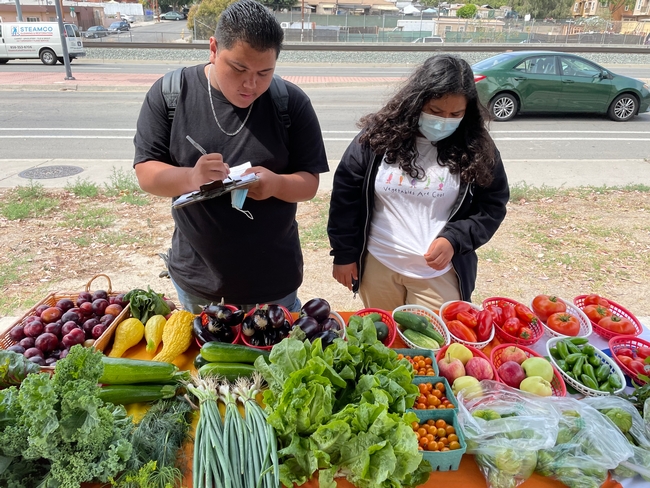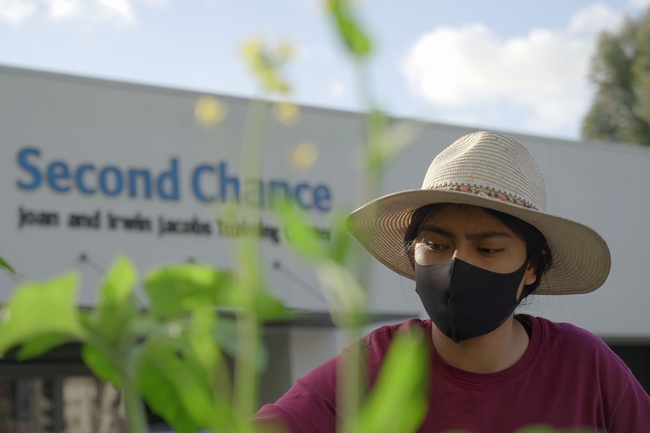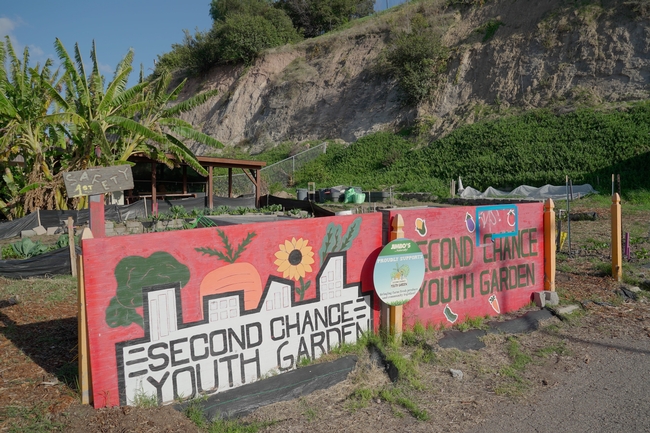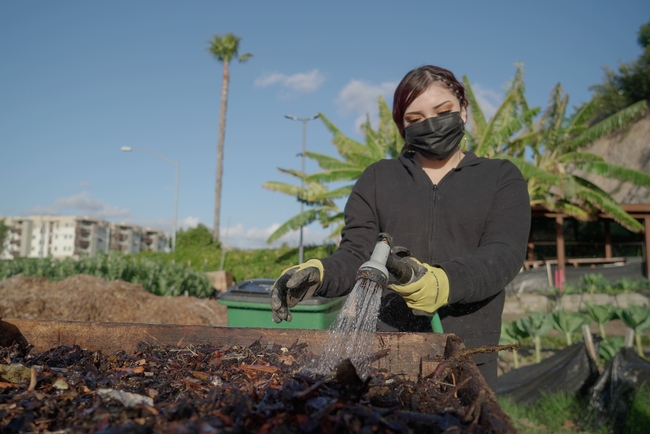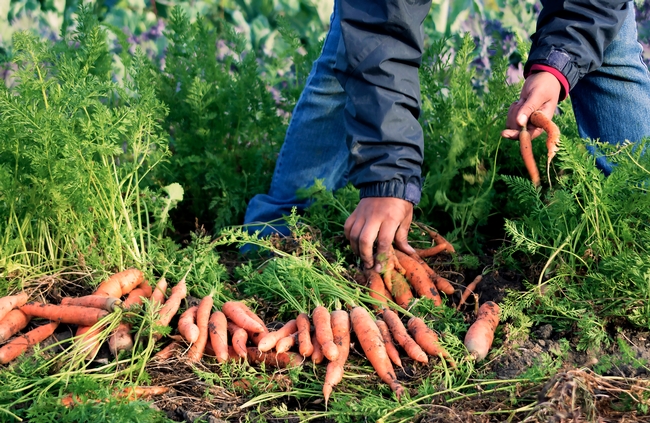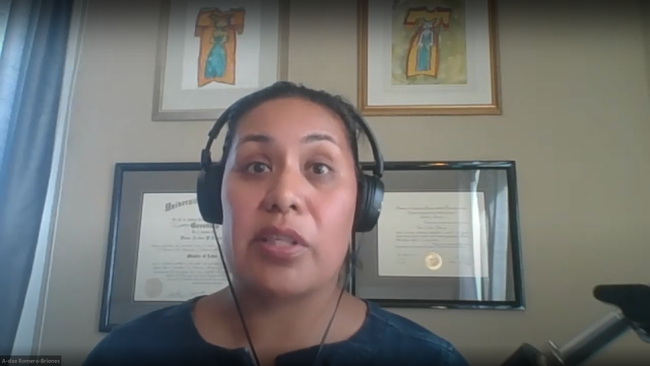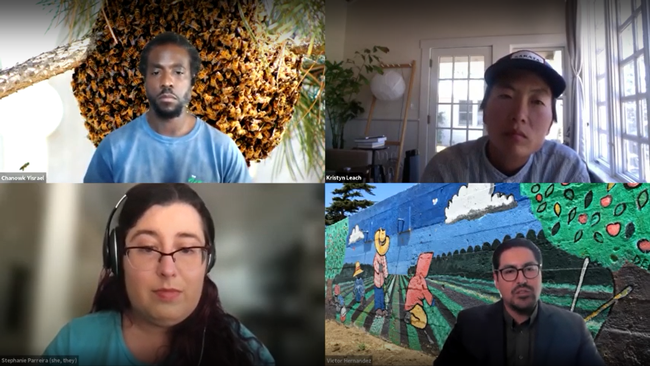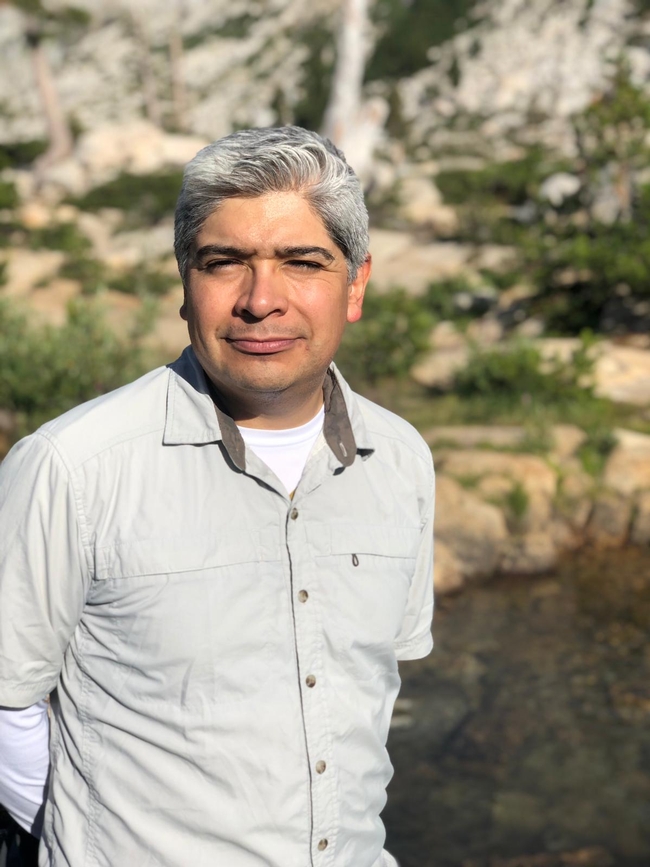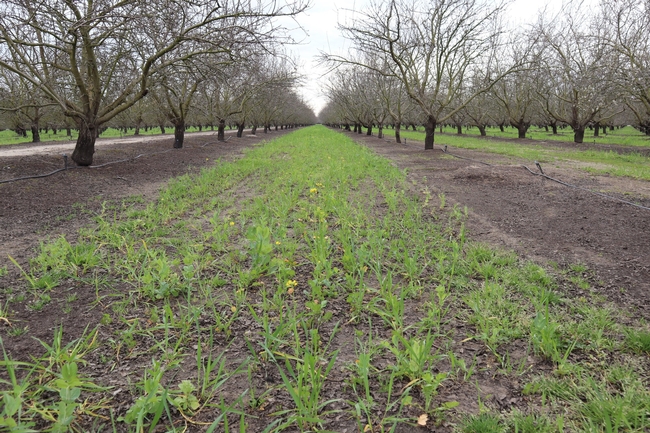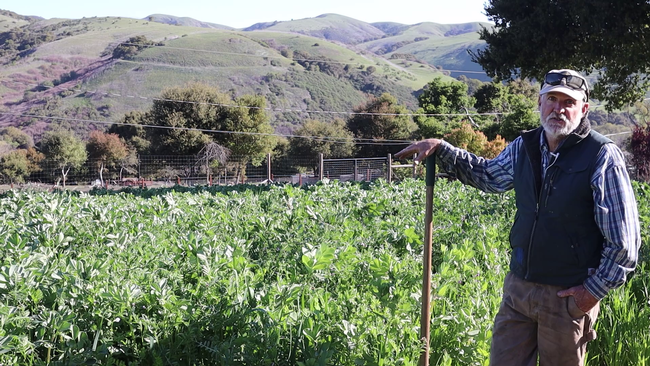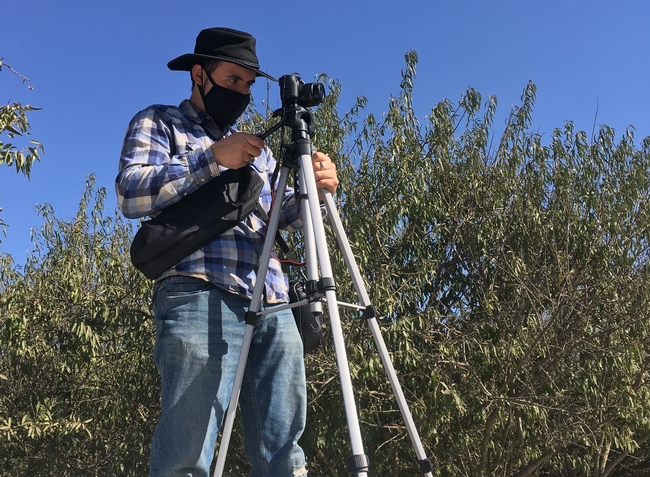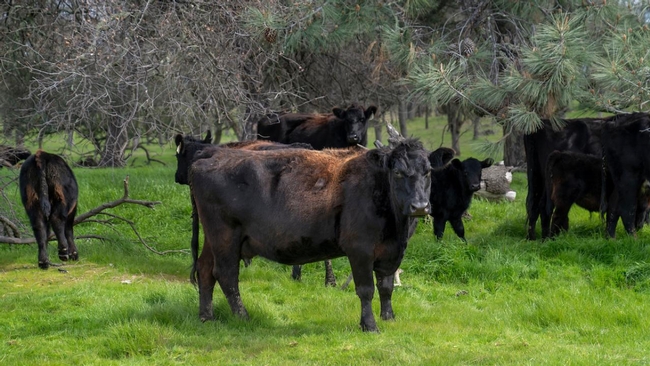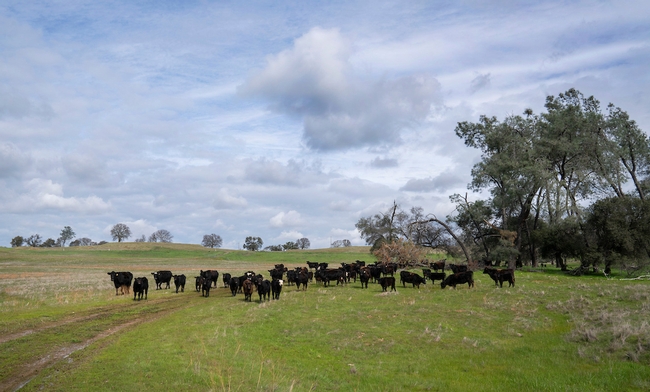Posts Tagged: food systems
Webinars to explore local food systems and food waste
UC Thelma Hansen Fund to host online discussion of food systems April 26-28
Members of the public are invited to attend a free webinar series discussing local and regional food systems on April 26-28.
At the three-day webinar “Local Food: Shortening the Supply Chain and Reducing Food Waste,” UC Berkeley agricultural economics professor and Wolf Prize laureate David Zilberman will discuss the status of our food supply chain and the socioeconomic and environmental forces affecting it. Diana Winter, deputy director of the UCLA Resnick Center for Food Law and Policy, will delve into the role of law and policy and current sustainability initiatives at federal, state and local levels.
“Do you ever wonder how far your food travels before it gets to your plate? Local food has many benefits: a smaller carbon footprint, supports local farmers and businesses, and is likely to be fresher, tastier and more nutritious,” said Annemiek Schilder, director of UC Cooperative Extension and the UC Hansen Agricultural Research & Extension Center in Ventura County.
Topics of discussion include defining regional food systems in California and how they contribute to community health. The series will take a look at a local school district that works to shorten the supply chain by preparing delicious meals from whole and local ingredients and turning cafeterias into classrooms. A local farmer will speak to the challenges of producing and distributing food locally.
“According to the USDA, about 30% to 40% of all our food supply is wasted, before or after market. Think of all the water, fertilizer, labor and fuel and wasted to produce and ship that food,” said Schilder who is organizing the event.
There are actions consumers can take to reduce food waste. Ned Spang, associate professor of food science and technology at UC Davis, will discuss solutions to food loss and waste throughout the supply chain. Programs such as UC Master Food Preservers offer resources and practical advice to preserve food. Local nonprofits like Food Share help to recover and redistribute food within communities.
Registration for the webinar series, which is sponsored by the UC Thelma Hansen Fund, is free. To register and see the agenda and speaker biographies, visit http://ucanr.edu/HansenFoodSystems.
Speakers include:
- David Zilberman, Ph.D., Professor, Department of Agricultural and Resource Economics, UC Berkeley
Our food supply: Where Are We and Where Are We Going? - Diana Winters, Ph.D., Deputy Director, Resnick Center for Food Law and Policy, UCLA
Food Policy and Sustainability - Gail Feenstra, Ph.D., Director UC Sustainable Agriculture Research & Education Program
Regional Food Systems: Connecting Farms, Consumer, and Communities - Vanessa Zajfen, Director Food and Nutrition Services, Ocean View School District, Oxnard, California
Shortening the Supply Chain with “Farm to School” - Max Becher, Co-Owner, Farmivore, Oxnard, California
Farmivore: Connecting Farmers with Eaters - Ned Spang, Ph.D., Associate Professor, Department of Food Science and Technology, UC Davis
Advancing Solutions to Address Food Loss and Waste - Sue Mosbacher, Coordinator UC Master Food Preserver Program
Preserve Today, Relish Tomorrow: Education in Food Preservation - Monica White, President & CEO, Food Share, Ventura County
Saving Food to Help Those in Need
Youth-run garden provides 10,000 pounds of produce for San Diego families
UC SAREP's Sustainable Agriculture and Food Systems grant helps support Second Chance garden
Fifteen-year-old Xavier knows the anger within him will never leave. “I can't ever get rid of it,” he said.
“I've always wanted to just fight for no reason; I just had an anger issue, losing my temper quick with people,” added Xavier, a ninth-grader in San Diego County. “I have high expectations of myself.”
Xavier is working to keep his emotions under control, and he has found a sense of calm through his volunteer work. He was an intern – and then a peer supervisor – in the youth-run garden of Second Chance, a San Diego-based organization that works to break the cycles of poverty and incarceration by providing housing and job training to adults and young people.
Operating their garden as a small farm business, youth in the program, ages 14 to 21, offer produce to the community through their farm stand and a CSA (Community Supported Agriculture) model.
“The project incorporates a ‘farm to fork' approach in which youth not only experience how to grow food, but how to cook and eat healthfully,” said Gail Feenstra, director of the University of California Sustainable Agriculture Research and Education Program, which has a grant program that funds research and education projects – such as the youth garden – supporting sustainable food systems.
“Second Chance works primarily with youth in communities of color, providing them with training and also helping them develop confidence in themselves,” Feenstra said.
Filling a critical need for fresh produce
Caelli Wright, program manager of the Second Chance youth garden, said that grant funds from SAREP – a program of UC Agriculture and Natural Resources – have been used to purchase the supplies needed to sustain the program. The garden has filled a critical need for produce during the COVID-19 pandemic.
“After the pandemic hit, we recognized the increased need for fresh food in our neighborhoods,” Wright said. “That need was already there – southeast San Diego is considered a ‘food swamp' or ‘food apartheid', if you will – and with the onset of COVID, that need just escalated with unemployment and complications in our food production systems.”
Through a partnership with UC San Diego Center for Community Health and Encanto Elementary School (located down the block from the garden), donations enabled the program to give its CSA shares to about 25 families at Encanto. Over the course of the pandemic, the youth have grown 10,000 pounds of produce to donate.
At the same time, the program helps the young participants grow. For Xavier, being outdoors with peers empowered him to develop positive relationships. Previously, as a student in a charter school program, he was not accustomed to interacting with people and groups. Volunteering in the youth garden has given him a fresh perspective and understanding of others.
“Learning to be patient with people and [to] accept sometimes that if I don't know something, I need to ask about it, because I used to be so in my ego that I thought I knew everything,” Xavier explained. “But I don't know everything – I just learned to accept some things…that's just being part of life. And that's something that the garden has helped me with, personally.”
Opportunities for personal, social growth
Developing – and redeveloping – social skills are especially important for students, as they return from the disconnections associated with remote learning.
“Right now, with a lot of students facing the aftermath of COVID and being restricted to learning at home and not getting as much social interaction in their daily lives, it's led to a lot of challenges, mental health-wise, and social and emotional learning-wise,” Wright said. “The garden program provides that opportunity that some youth have been missing out on.”
In southeast San Diego, such crucial opportunities for personal growth and career exploration are harder to come by, and Second Chance started the garden in 2012 to give youth a unique work experience and valuable skills. About 400 young people have participated in the program.
“The youth that we serve are coming from low-income neighborhoods that are underserved with resources,” Wright said. “They just are not exposed to the same opportunities [as those in higher-income areas] to build skills or be ready for the workforce or to reach higher education – so that's where our program comes in and helps deliver those needed services.”
Xavier, who originally came to the garden because he heard that landscaping could be a lucrative career, recently finished his second stint as a peer supervisor in the youth garden. With his new skills, he and his cousin are looking to start a business of their own, cutting grass and doing yardwork in their community.
And, late last month, Xavier transferred to a more traditional high school environment.
“Being in a charter school after two, three years,” he said, “I've realized I miss being around more people.”
Farmers of color share their contributions, concerns in UC SAREP webinar series
When agricultural advisors came to the Cochiti Pueblo in New Mexico during the 1940s, they lined the irrigation ditches with concrete, in the name of boosting efficiency and productivity. But in single-mindedly focusing on water delivery, they neglected to consider how the previously inefficient seepage sustained nearby fruit trees.
Their actions, as well-intentioned as they might have been, disrupted the local ecosystem and killed the trees that had fed many generations, according to A-dae Romero-Briones, who identifies as Cochiti and as a member of the Kiowa Tribe.
“In my language, we call the extension agents ‘the people who kill the fruit trees,'” said Romero-Briones, director of the Food and Agriculture Program for the First Nations Development Institute, a nonprofit that serves Tribal communities across the mainland, Alaska and Hawaii.
The historically tense relationship between Indigenous peoples and government-affiliated programs is one of the many complex dynamics discussed in a six-part webinar series, “Racial Equity in Extension,” facilitated by UC Sustainable Agriculture Research and Education Program.
Making communities of color in the agricultural sector more visible is a priority for Victor Hernandez, a sociologist and outreach coordinator for the USDA's Natural Resources Conservation Service. Hernandez, who has organized “Growing Together” conferences for Latino and Black farmers, is trying to get more farmers of color to participate in the upcoming 2022 Agricultural Census.
“If we cannot quantify the demographic, we cannot justify the need,” emphasized Hernandez, explaining that his office uses the data to direct resources that advance equity in service, program delivery and distribution of funds.
A legacy of mistrust
At the same time, however, Hernandez also acknowledged the challenges in registering growers of color for the census, conducted by the USDA's National Agricultural Statistics Service. (According to Brodt, USDA's most recent agricultural census, dating to 2017, counts approximately 25,000 producers of color among 128,535 total producers in California.)
“Many of us that are considered socially disadvantaged or historically underserved…a lot of times our peoples come from [nations with] oppressive governments,” Hernandez said. “And so when you come to the United States and you begin to build your life here, to go and engage with the federal government is not the first knee-jerk reaction.”
On top of government mistrust and fears of deportation or detention, other immigrant groups have seen mainstream agriculture – borne by the “Green Revolution” wave across the globe – replace deep-rooted cultural practices, said Kristyn Leach of Namu Farm in Winters.
“It just makes these small farmers distrust our own knowledge, the knowledge that's existed for centuries – before the kind of current iteration of agriculture that we're situated within right now,” said Leach, who works to preserve the agricultural heritage of her Korean ancestors, and facilitates a farmers' collaborative called Second Generation that adapts Asian crop varieties to climate change.
According to Romero-Briones, a collective memory of supplanted culture also lingers in Indigenous communities. In the Cochiti Pueblo, “primarily a subsistence agriculture community” with a long history of corn cultivation, their practices are distinct from those in the mainstream – including regenerative and sustainable agriculture.
Building relationships takes commitment
Given that legacy of cultural displacement and appropriation, how do extension professionals and other agricultural advisors slowly rebuild trust with communities of color? For Romero-Briones, it begins with a genuine respect for Indigenous practices, and she urges interested people to contact their local tribal historic preservation officer to begin strengthening those connections and understanding – beyond a couple of phone calls.
“As someone who works with Indigenous people all day, even I need to recognize sometimes I have to meet with people up to 12 times before we actually start talking about the work that I initially wanted to talk to them about,” Romero-Briones said.
In a similar vein, Chanowk Yisrael, chief seed starter of Yisrael Family Farms, encouraged listeners to reach out to members of the California Farmer Justice Collaborative – an organization striving for a fair food system while challenging racism and centering farmers of color.
“To use a farm analogy: we've got this ground, which is the farmers of color who have been neglected for a long period of time,” said Yisrael, who has grown his farm in a historically Black neighborhood of Sacramento into a catalyst for social change. “It's not just going to be as simple as just throwing some seeds and things are going to come up; you're going to have to do more – that means you got to get out and do much more than you would do for any other community.”
Investing time in a community is one thing – and backing it up with tangible resources is another. Technical expertise is only the “tip of the iceberg,” Leach said, as historically marginalized groups are also seeking land access and tenure, more affordable cost of living, and access to capital.
“All of those things are actually much bigger burdens to bear for most communities of color than not having the knowledge of how to grow the crops that we want to grow, and not knowing how to be adaptive and nimble in the face of climate change," Leach explained, highlighting California FarmLink as an essential resource. (The “Understanding Disparities in Farmland Ownership” webinar includes a relevant discussion on this subject.)
Bringing diverse voices to the table
Another key is ensuring that farmers and farm workers of color are represented in management and decision-making processes. Samuel Sandoval, a professor in the UC Davis Department of Land, Air and Water Resources and UC Cooperative Extension specialist in water management, develops outreach programs in English and Spanish for everyone from farm workers to the “boss of the boss of the boss.”
“It has to be changed,” he said, “because at the end, the person who is going to operate the irrigation system and turn on or off the valves, the person who is looking if there's a leak or not – that's the person who's not being informed, or has not been informed on purpose.”
That exclusion of certain groups can lead to a loss of invaluable knowledge. Leach said there is a real danger in ignoring the wisdom of communities that have contributed so much to the foundation of food systems in California and around the globe.
“These really kind of amazing, sophisticated and elegant agroecological systems that we don't often legitimize through the scientific language and perspectives aren't seen as being really technically proficient – but, in many ways, they're more dynamic and more resilient than the things that we're perpetuating right now,” she said.
As a concrete example, Sandoval said that while extension advisors and specialists conduct studies to remedy a plant disease, farm workers might be developing – separately and in parallel – their own solutions by asking for advice from their social networks via WhatsApp, a phone application.
A reimagining of collaboration, Sandoval said, would include (and compensate) people working in the field for sharing their perspectives – bringing together academics and farmers, integrated pest management experts and pesticide applicators, irrigation specialists and those who do the irrigation.
A need to look within
Concerns about inclusion and validating alternate sources of knowledge apply also to the recruitment process in extension. Leach said that she has seen listings for advisor jobs that would require, at a minimum, a master's degree – which would automatically disqualify her, despite her extensive knowledge of Asian heirloom vegetables.
“When you look at a job description and you see ‘Asian crop specialist,' only required qualification is a master's degree, and then somewhere down the long list of sort of secondary desired, recommended things is some knowledge of Asian crops or communities…you know that just says a lot in terms of what has weight,” Leach explained.
Before organizations can authentically connect with communities of color, they should prioritize diversity in their own ranks, said Romero-Briones. First Nations Development Institute had to ensure that they had adequate representation across the many Tribes that they serve.
“Before we start looking out, we have to start looking in,” she explained, “and that means we have to hire Indigenous people who know these communities.”
For extension professionals and other members of the agricultural community in California, the UC SAREP webinar series has helped spark that introspection and a meaningful reevaluation of institutional processes and assumptions.
“These discussions have been tremendously illuminating and eye-opening,” Brodt said. “But hearing and learning is just the start – it's incumbent on us, as an organization and as individuals, to take action to ensure that farmers of color and their foodways are truly respected and valued.”
The “Racial Equity in Extension” series is made possible by professional development funds from Western Sustainable Agricultural Research and Education.
Cover cropping season has begun: Free recorded webinars, demos available
Cover crops, typically planted in early fall, deliver a host of agricultural and conservation benefits. But many growers have gone away from planting them due to technical challenges and extra costs associated with the practice. In partnership with the Contra Costa County Resource Conservation District, two University of California Cooperative Extension advisors collaborated to support farmers' cover cropping efforts and reduce costs.
Kamyar Aram, UCCE specialty crops advisor for Contra Costa and Alameda counties, and Rob Bennaton, UCCE Bay Area urban agriculture and food systems advisor, developed online project content for a free educational series on cover cropping, which entails growing non-cash crops to add beneficial biomass to soils.
The series – comprising 10 webinars and five virtual farm-site visits – features UC farm and urban agriculture advisors and some of California's foremost experts on cover cropping. It helps growers overcome their hesitations about the practice, which provides benefits such as alleviating compaction, improving water retention and increasing organic matter and nutrients in the soil.
“Our site visit videos include a diversity of cropping systems, operation types and scales, and levels of experience with cover crops, so we really capture a variety of perspectives,” Aram said. “Now, with the videos online, I hope that they will serve as tools for other farm educators, as well as a resource for growers directly.”
When the COVID-19 pandemic scrapped plans for in-person workshops and visits, the series organizers pivoted to online webinars, starting in fall 2020, which drew more than 150 participants. The recorded videos – which cover basic methods, financial assistance, tips for orchards and vineyards and more – expanded the potential reach and impact of the series far beyond Contra Costa County.
“Each video, whether it's a webinar recording or a virtual site visit, emphasizes different aspects, and the titles are designed to help viewers find the resources they are most likely to benefit from,” said Aram. “There really is something for everyone.”
In particular, the organizers of the series recognized the importance of including technical and extension support to urban and semi-urban farmers in the East Bay and beyond.
“We wanted to make sure to include practical support from fellow farmers that was both accessible and relevant to our diverse small and urban farmers,” said Julio Contreras, UCCE community education specialist. “This meant covering topics like seeding with spreaders or by broadcasting – using small equipment and machinery or no-till systems – and even cover cropping in planter boxes.”
Aram and Bennaton also credited their Contra Costa Resource Conservation District partners: Ben Weise, agriculture conservation manager; Derek Emmons, agriculture conservation coordinator; and Chris Lim, executive director.
The project, funded by a Specialty Crops Block Grant from the California Department of Food and Agriculture, was also made possible by the generous contributions of time and expertise from presenters and hosts of farm-site visits, according to Aram.
“I hope that the videos will enjoy a long life online; they really contain a wealth of knowledge,” he said.
The series is available for view at http://ucanr.edu/CoverCropsCoCo.
California’s local meat suppliers struggle to stay in business
UC Davis report suggests ways to build resilience
The University of California, Davis, Food Systems Lab has released a white paper showing the need to support California's small and mid-scale meat suppliers and processors in order to build a more resilient meat supply chain. It describes how the meat supply chain and rural economies could benefit from regulatory changes and more collaboration among producers and other stakeholders in the system.
The pandemic shut down meat processing plants in 2020, as did recent ransomware attacks on JBS, the nation's largest meat supplier. Report authors said this highlights the need to support small- and mid-scale suppliers.
“COVID and the ransomware attacks put a spotlight on how the concentration of the meat supply chain increased vulnerability in the food system,” said report co-author Tom Tomich, founder of the UC Davis Food Systems Lab and distinguished professor in the Department of Environmental Science and Policy. “We need to level the playing field so small- and mid-scale farms have an easier way to bring their product to market.”
The report says the lack of access to slaughter facilities, limited capacity of cut and wrap facilities, and concentration of marketing channels create conditions in which small- and mid-scale farms and ranches struggle to stay in business.
“These challenges are exacerbated by policies that tilt the playing field against small operators. Fortunately, new state and national legislation and programs are developing that could increase resilience in our food systems,” says Michael R. Dimock, Roots of Change program director and lead author for the report. “We need cities and counties to help fix the problems because local land use policies often impede development of resilient supply chains.”
Lack of access and limited capacity
Smaller ranchers in California have limited access to slaughter and processing facilities. In the last 50 years, California has lost half of its federally inspected meat processing plants, and the remaining facilities are unable to meet demand. Many of the 46 USDA-certified slaughter plants operating in California are closed to smaller producers.
“This means that smaller ranchers must drive hundreds of miles to reach a facility or have to wait months due to limited capacity,” said Tomich.
The report said a combination of federal, state and private investments could provide a broader geographic distribution of plants of differing scales. It also suggests expanding mobile, on-farm slaughter operations for sheep, goats and hogs, similar to those for beef.
Regulatory barriers and opportunities
Complex inspection requirements and other regulatory barriers make it difficult for small- and mid-scale producers to compete with big suppliers. The report suggests California create its own meat inspection program equivalent to the federal program to serve smaller ranchers. Prioritizing public procurement of local, high-value meat would also help expand market access for smaller producers.
Broader benefits of smaller operators
The report notes other beneficial roles of small- and mid-scale livestock operations, apart from the potential to increase resilience in our food system. Livestock grazing is a cheap and effective way to reduce wildfire risk. Supporting local meat processing also helps rural economies and creates community-based jobs.
The report was based on 27 interviews with people representing a wide spectrum of activities and points of view within the meat supply chain throughout the state. Authors are Courtney Riggle, Allan Hollander, Patrick Huber and Thomas Tomich of the UC Davis Food Systems Lab, and Michael R. Dimock with Roots of Change.
Funding for the study came from the TomKat Foundation and USDA Hatch Program.

